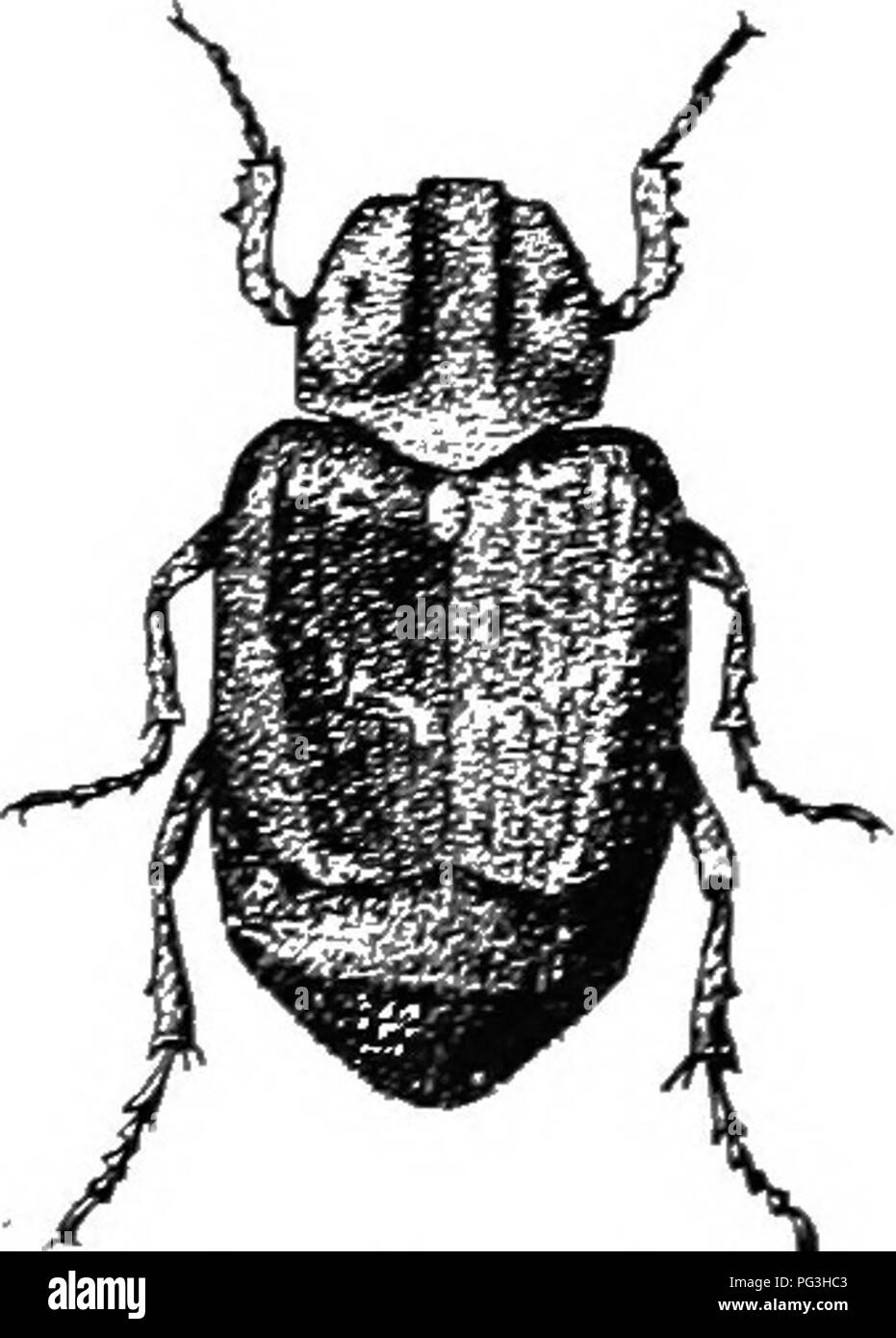. An illustrated descriptive catalogue of the coleoptera or beetles (exclusive of the Rhynchophora) known to occur in Indiana : with bibliography and descriptions of new species . Beetles. THE LAMELLICORN BEETLES. 1005 which is wider at l>:Lse and with an impression on the middle of each side. Elytra with disli fetbly but evidently concave; intervals each with two rows of shallow punctures. Under surface and femora rather densely clothed with yellowish scales. Lengtli 5-C mm. Southern half of State; frefjuent. February 21-December 10. Both this and the next hibernate in eolonif s beneath mu

Image details
Contributor:
Central Historic Books / Alamy Stock PhotoImage ID:
PG3HC3File size:
7.2 MB (232.2 KB Compressed download)Releases:
Model - no | Property - noDo I need a release?Dimensions:
1338 x 1868 px | 22.7 x 31.6 cm | 8.9 x 12.5 inches | 150dpiMore information:
This image is a public domain image, which means either that copyright has expired in the image or the copyright holder has waived their copyright. Alamy charges you a fee for access to the high resolution copy of the image.
This image could have imperfections as it’s either historical or reportage.
. An illustrated descriptive catalogue of the coleoptera or beetles (exclusive of the Rhynchophora) known to occur in Indiana : with bibliography and descriptions of new species . Beetles. THE LAMELLICORN BEETLES. 1005 which is wider at l>:Lse and with an impression on the middle of each side. Elytra with disli fetbly but evidently concave; intervals each with two rows of shallow punctures. Under surface and femora rather densely clothed with yellowish scales. Lengtli 5-C mm. Southern half of State; frefjuent. February 21-December 10. Both this and the next hibernate in eolonif s beneath mullein leaves and half burieil loirs and chunks and in old trees in dry, upland woods. Tliey occur in spring and summer on flowers, especially those of the red haw {fratngus) and dogwood {f'ornus). One speeiiuon at hand has the pygidium terminating in a sharp taper- ing spine 3 mm. in length, and grooved its full length above and beneath. *1S72 (.5944). Valgus sqiamigeb Beauv., Ins. Af. et Amer., ISO'i, .jfi. Resembles the preceding but larger and usual- ly dark piceous-brown in color. Thorax more coarse- ly punctate, with fewer and larger teeth along the sides, the median groove less distinct on basal half and often with a short oblique ridge each side. Teeth of front tibise broader, triangular and more rounded or blunt at apex. Surface of elytra and pygidium deiiusely granulate: under surface less densely scaly. Length fl..j-T..o mm. (Fig. 422.) Siiutheru half of State; frequent. April 13-December 10. Occurs in the same places Rg. 422. x u- (Original.) and often with canaliculatus. Series V PHYTOPHAGA. The members of this series have the tarsi apparently 4-.iointed, rarely {SpondnUdu), the fifth joint dLstinct. the three basal joints almost always densely set with cushion-like pubesr^enee beneath; third joint grooved on its upper surface or divided into two lobes, so as to allow the insertion of the fourth joint near its base instead of in front; head not forming a prolonged b